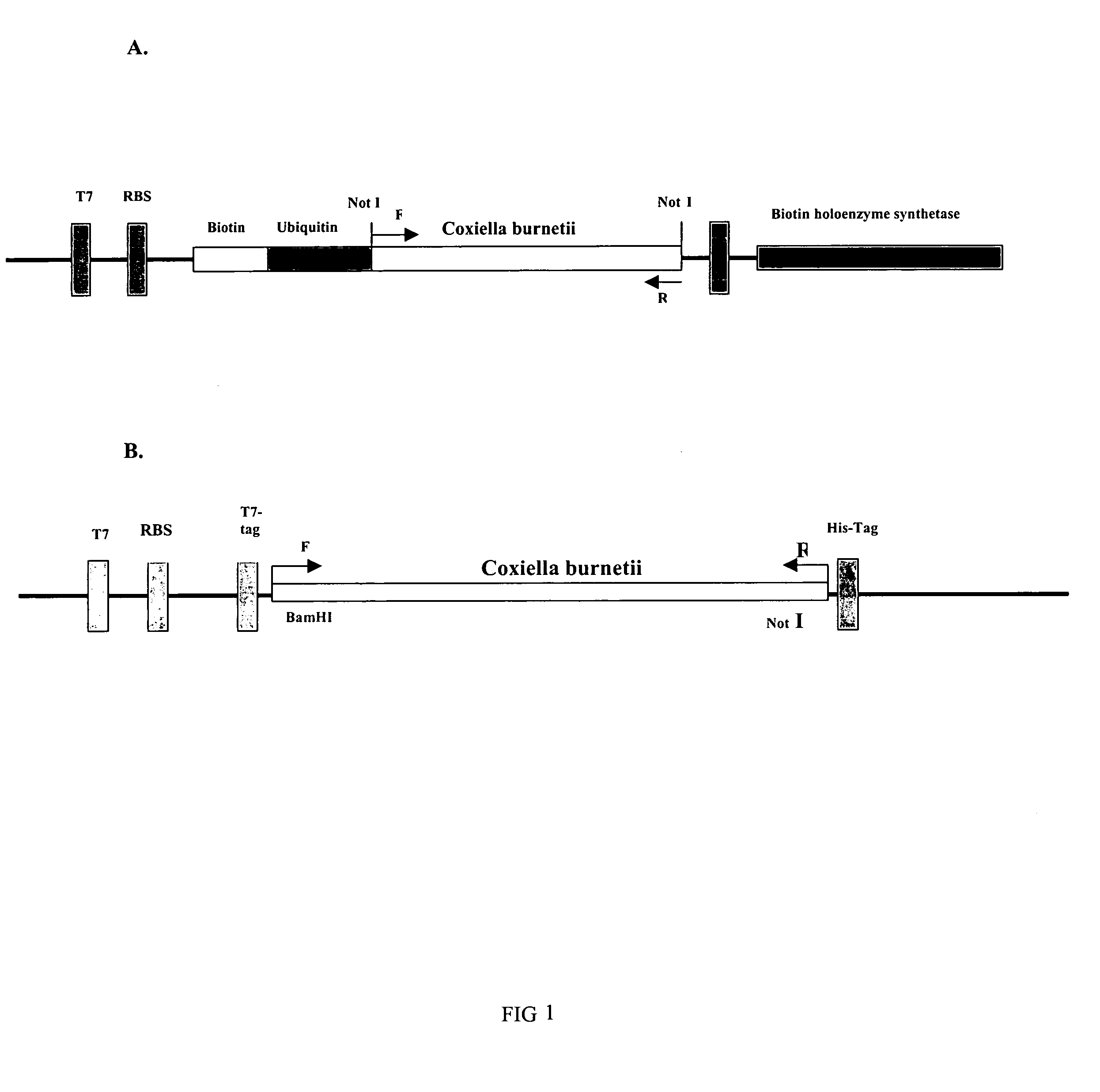Recombinant antigens for the detection of Coxiella burnetii
a technology of coxiella burnetii and recombinant antigens, which is applied in the field of recombinant antigens for the detection of coxiella burnetii, can solve the problems of easy methods and low detection efficiency, and achieve the effects of improving assay standardization, facilitating coupling, and being convenient to perform
- Summary
- Abstract
- Description
- Claims
- Application Information
AI Technical Summary
Benefits of technology
Problems solved by technology
Method used
Image
Examples
example 1
Use of C. burnetii Peptides as Diagnostic Assay Reagent in ELISA
[0027]Currently available diagnostic assays or Q fever primarily rely on serum-based assays for the detection of antibodies to C. burnetii with IFA the primary assay method. However, this assay, is often not sensitive and can lead to inaccurate results due to the somewhat subjective nature of the assay procedure. Therefore, other, more objective means of detection of C. burnetii infection and diagnosis of Q fever are needed. One such method is enzyme-linked immunosorbent assay (ELISA) or other antibody-based assay. In order to sensitively and reliably diagnosis by this method, suitable, standardized antigen must be available. An aspect of this invention is the use of the recombinant protein antigens in antibody-based assays such as ELISA, lateral flow or immunochromatigraphic assays.
[0028]A number of proteins have been identified in western blot studies as being highly immunoreactive to anti-C. burnetii antibody from C....
example 2
Expression of Tagged Recombinant C. burnetii Fusion Proteins
[0057]Antigen reactivity to patient serum can be enhanced by either using antigen with increased number of B-cell epitopes, improving efficiency of antigen attachment to the solid matrix prior to serum exposure or by reducing the potential for steric hinderance by improving antigen orientation on the solid matrix.
[0058]Previously ELISA methods require direct adhering of assay antigen onto the ELISA plates. Alternatively, antigen can be captured by specific antibody bound to the plates. However, either technique has distinct disadvantages. By adhering antigen directly to plates, potentially reactive epitopes are masked from binding to antibody in test sera. Furthermore, adherence of antigen cannot be completely controlled since the non-specific binding characteristics vary from one lot of plates to another or plate to plate within a lot. Furthermore, non-specific adherence to the plate can vary depending on the conditions us...
PUM
| Property | Measurement | Unit |
|---|---|---|
| temperature | aaaaa | aaaaa |
| temperature | aaaaa | aaaaa |
| pH | aaaaa | aaaaa |
Abstract
Description
Claims
Application Information
 Login to View More
Login to View More - R&D
- Intellectual Property
- Life Sciences
- Materials
- Tech Scout
- Unparalleled Data Quality
- Higher Quality Content
- 60% Fewer Hallucinations
Browse by: Latest US Patents, China's latest patents, Technical Efficacy Thesaurus, Application Domain, Technology Topic, Popular Technical Reports.
© 2025 PatSnap. All rights reserved.Legal|Privacy policy|Modern Slavery Act Transparency Statement|Sitemap|About US| Contact US: help@patsnap.com



